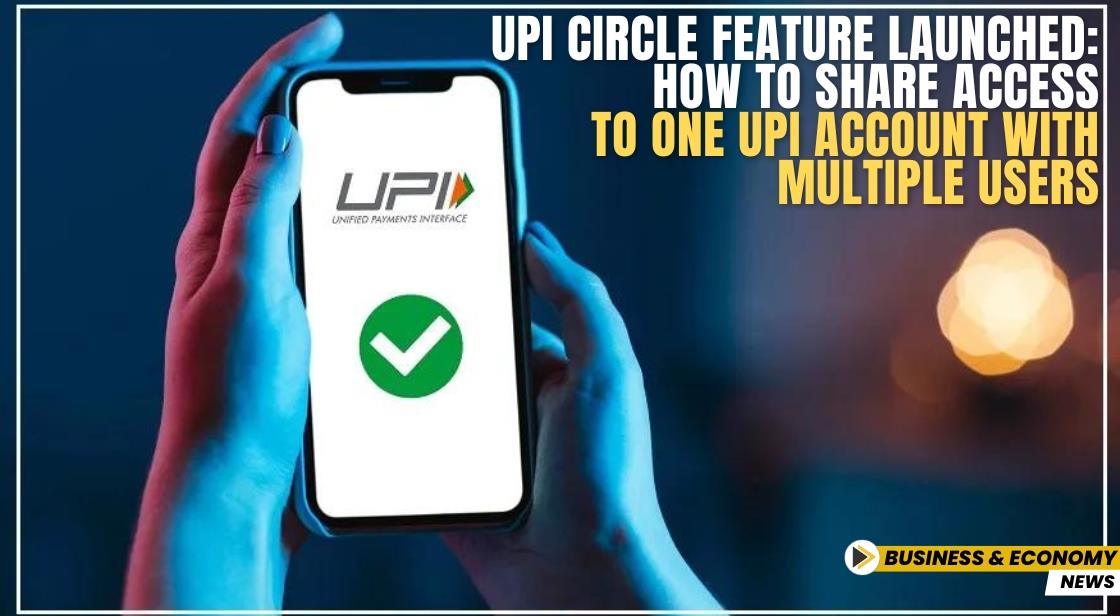UPI Circle Feature Launched: How to Share Access to One UPI Account with Multiple Users

News Synopsis
The National Payments Corporation of India (NPCI) has recently launched a groundbreaking feature called "UPI Circle," designed to enhance accessibility and flexibility in digital payments. This innovation, approved during the UPI Steering Committee meeting on August 3, 2023, aims to simplify financial management for users who may need assistance with handling their digital transactions. UPI Circle allows primary users to delegate payment responsibilities to trusted secondary users, making it easier to manage finances collaboratively.
What is UPI Circle?
UPI Circle is a feature intended to empower individuals who do not have direct control over their finances but still need the capability to perform digital payments. The feature facilitates the linking of UPI accounts between primary users and secondary users, enabling the latter to conduct transactions on behalf of the former. This system introduces two primary types of delegation:
-
Full Delegation: In this setup, the primary user grants the secondary user the authority to initiate and complete transactions within specified spending limits. The secondary user can carry out these transactions without needing further approval from the primary user. This mode offers a high degree of autonomy to secondary users while still adhering to predefined limits.
-
Partial Delegation: Here, the secondary user can initiate transactions but requires the primary user to authenticate and finalize the payment using their UPI PIN. This approach provides enhanced control over larger transactions, ensuring that the primary user retains oversight over significant financial activities while allowing flexibility for routine payments.
Key Guidelines for UPI Circle
To ensure a secure and efficient implementation of the UPI Circle feature, NPCI has established specific guidelines for UPI apps and Payment Service Providers (PSPs). These guidelines include:
-
Independent User Journeys: Both primary and secondary users will follow separate user journeys on their respective UPI apps. This design allows each user to maintain their preferences and control over their transactions, ensuring a tailored experience for both parties.
-
Mandatory Security Protocols: To safeguard transactions, all secondary users are required to use security measures such as passcodes or biometric authentication (including fingerprint or facial recognition). These protocols enhance the security of the transactions and protect against unauthorized access.
-
Linking Process: The linking process for UPI Circle involves the primary user scanning a QR code or entering the secondary user’s UPI ID. Following this, the primary user selects the secondary user’s contact from their phone. In the future, the process will streamline to allow only contact selection, with manual entry of mobile numbers being restricted to bolster security.
-
Delegation Limits: A primary user can delegate payment authority to a maximum of five secondary users. Conversely, a secondary user can accept delegation from only one primary user. This restriction prevents overlapping responsibilities and ensures clear and manageable delegation.
Who Can Benefit from UPI Circle?
UPI Circle is particularly advantageous for individuals who either cannot or prefer not to manage their digital payments independently but still need access to financial services. The feature is beneficial for:
-
Elderly Family Members: Elderly individuals who rely on younger family members to manage their finances can benefit greatly from UPI Circle. This feature allows them to conduct digital transactions with the assistance of trusted family members, ensuring they stay connected to modern financial systems without handling the complexities themselves.
-
Children or Dependents: Children or dependents who require funds for daily expenses can use UPI Circle to access necessary financial resources. The feature provides a controlled way for them to manage transactions while still under the oversight of a primary user.
-
Household Workers: Individuals like household workers who need to make digital transactions but do not manage their own bank accounts can utilize UPI Circle. This setup ensures that they can perform transactions efficiently without the need for direct account management.
Conclusion
The introduction of UPI Circle marks a significant advancement in digital payment systems, offering a practical solution for managing finances collaboratively. By enabling primary users to delegate payment responsibilities to secondary users, this feature addresses the needs of individuals who require assistance with their financial transactions. The comprehensive guidelines and security protocols established by NPCI ensure that UPI Circle operates securely and efficiently. As more users adopt this feature, it is expected to facilitate easier financial management and broaden the accessibility of digital payments for diverse groups of individuals.
You May Like









